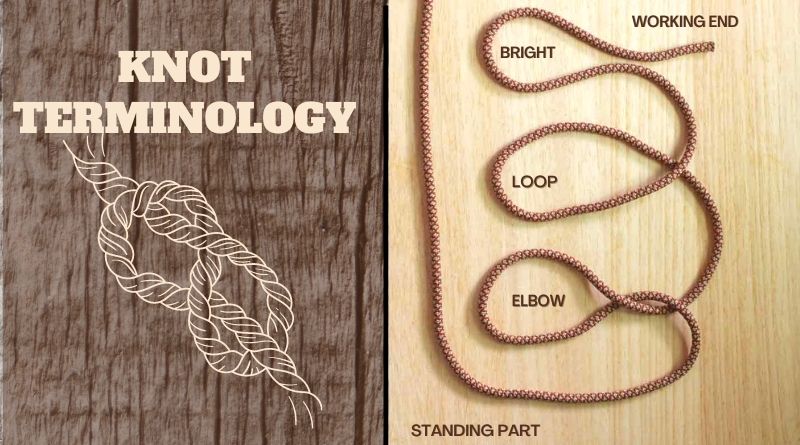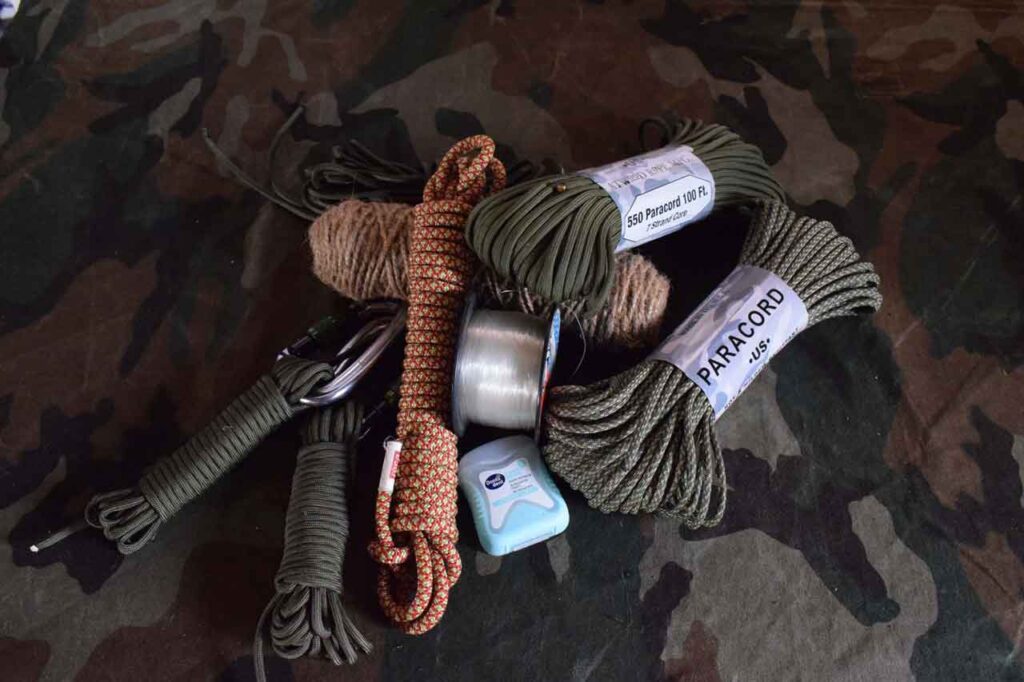Survival Knots Everyone Needs To Learn
Tying Knots is an essential skill that everyone serious about prepping, survival, or bushcraft needs to know. There are a few essential survival knots and basic rope skills that everyone should learn. There is a misconception that tying knots is only for fishermen, sailors, and climbers. But Knots are equally important in everyday life and a wide variety of survival scenarios.
Knots are important for everything from tying up a tarpaulin for a shelter to tying down gear in a storm. There are a variety of knots for a vast variety of situations. Writing down the best knot for every scenario is beyond the scope of this article.
What we will do is write down the most commonly used knots for a survival situation. These knots are versatile and will be enough for the most common knot-related tasks.
Be aware there are going to be specialized knots for specific situations. And in the future, we will probably get into those specialized knots. But until then. Learn these first.
Basic Knot Terminology
Loop, a loop of cord.
Bight, cords close together while not crossing over.
Bite is the part of the cord that grips itself to hold a knot together.
Working End, is the part of the cord that is actively used to tie the knot.
Standing End, is the part that is held inactively while tying the knot.
Standing Part, the parts of the cord that are unused in the tying process.
Whipping is the process of tying a smaller cord or thread to the end of the rope to prevent fraying.
Kink, small damage to the rope resulting from small loops or repeated knot tying.
Lashing is the process of tying two objects together with a cord.
Knot is a term used to describe the process of tying a cord to itself or another cord.
Hitch, a term used to describe a cord being tied to an object.
Elbows, Cord crossing over itself.
Dressing, Dress a knot by properly adjusting the knot so that it lays properly. Arranging the knot in a certain way, may increase the strength of the knot as well as prevent the knot from jamming.

Types of Rope
Generally, there are 2 types of cords. Synthetic and natural cords.
For more information Click Here
Breaking Strength
Be aware that all cords have different breaking strengths, most synthetic cords are more durable and have a greater breaking strength than similar diameter natural cords. Even cords of the same diameter and material may have different breaking strengths depending on the manufacturer and model of the cord.
The only way to determine the breaking strength of cordage is to read the specification provided by the supplier. Each company has different testing methods which make comparing cords difficult.
If cordage of certain breaking strength is required (eg: for climbing). Check specifications very carefully, and only buy reputable brands. Such as Mammut, Petzl, Edelrid and Beal.
Knots Weaken Cordage
Any knot tied in the cord will weaken it, there are knots that some people claim will not weaken the cord, such as the “Bimini Twist”.
Taking Care of Cordage
Cordage care is not that difficult, keep cords clean, dry, and away from direct sunlight. Chemicals and dirt will easily damage the rope.
If a rope needs to be cleaned, do so in warm water to remove sand, grit, and any abrasives. Do NOT use washing powder as it will work as an abrasive and weaken your rope. Abrasives include salt from saltwater. Soak any cord exposed to saltwater in freshwater and gently dry with a cloth. Then hang to dry out of direct sunlight. Store in a cool, dark room, that is well ventilated.
Storing Cordage
Coil cord in large loops to prevent tangling and kinks.
Whipping The End of Cordage
In the past, this was the most popular method of preventing the cord from fraying, and it is still commonly practiced with natural cordage. With synthetic cordage melting the ends and taping are common methods of sealing off the ends of cords.
Bowline Knot
Commonly used as a rescue knot. It is one of the few knots that can be quickly tied one-handed, All firemen and rescue workers will know this knot well.
Prusik Knot
Well… actually I think Prusik hitch would be more accurate. The prusik is very versatile. It works great for setting up shelters, as well as for rappelling in an emergency. The prusik hitch is a loop of rope or cord that is tied off. It is then wrapped over another rope.
Holding the looped end of the prusik and exerting tension along the length of the rope the prusik is wrapped around will cause friction and the prusik will hold. As long as there is steady tension. To loosen the prusik, release tension, and slide it along the rope it is wrapped around, to lock it in place, increase tension on the looped hanging part of the prusik.
Reef Knot
Commonly known as the square knot is used for first aid (makeshift tourniquets), or tying two lines together. It is a very strong knot in the right conditions. It is also very simple to learn.
Reef knots do not do well with certain material ropes/cords such as nylon. It also tends to loosen if there is no tension and it is shaken about. If tying cords of 2 different diameters, then a sheep bend would be better.
Sheet Bend
Great knot for tying 2 cords/ropes together. Unlike the reef knot, the sheet bend works very well for tying 2 different diameter cords together. If the rope diameters are too different in size then a Double Sheet Bend is recommended. The thicker rope should be the one with the simple bight. The smaller rope should be wrapped around larger ropes bight.
Clove Hitch
The clove hitch is not a knot, but it is the basic start for many forms of lashings and wrappings. Very simple to tie, and very versatile. Probably one of the most common hitches used. It should be noted that the clove hitch can slip if the object it is tied to, is too large or if the pressure on the rope is not constant.
Double Fisherman’s Knot
Great for tying together 2 ends of a cord into a loop, that can later be used as a prusik hitch. The double fisherman’s knot is a solid knot that ties neatly. If the aim is for the knot to be used as a load bearer, tie a triple or even quadruple Fisherman’s knot.
Just be aware that if the knot is put under high pressure or heavy load. It can be a real pain to untie.
Figure 8 Knot
The figure 8 is a great stopper knot, it is also a very strong knot. Easy to inspect that it is tied correctly and very popular with mountain climbers. For survivalists, this knot has a multitude of uses. When a strong knot that is later going to be untied is needed, go for the figure 8.
Butterfly Alpine Knot
The butterfly alpine knot is the perfect knot for tying a loop into a length of rope. The loops have a variety of uses. To tie off a weaker part of a damaged rope, to create loops to hang items off in the middle of a rope.
Knot Safety
Knots need to be practiced if the aim is to be able to tie them properly and quickly. If they are to be used for climbing, kindly take a class and learn them from a professional. Learning climbing knots online without proper instruction is Dangerous.

Best Survival Cordage, What To Buy And Why You Need It. Click the Image Above